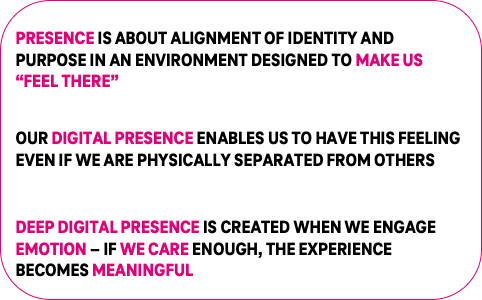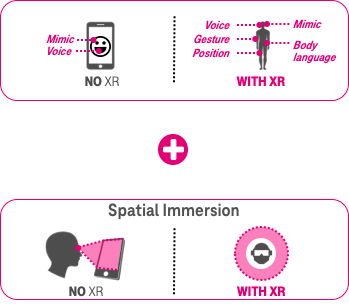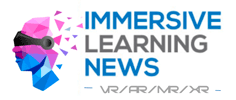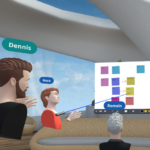Video conferencing and collaboration tools have become an integral part of our everyday lives — whether it be a way to connect with friends and family or our way of communicating for work. The COVID-19 pandemic has accelerated the need for these tools, by reshaping the way we work, learn, and socialize. The inability to maintain a physical presence has permanently changed the way we use digital communications platforms. Staying connected during the pandemic has forced logistical changes and created emotional challenges. We looked to video conferencing and collaboration tools people to transcend our physical separation. However, our attempts at filling the gaps of presence and togetherness came with significant tradeoffs.
Over the past year, many of us suffered from camera fatigue, loneliness, and continuous feelings of being disconnected. We asked ourselves, how can we really connect to one another? Are we really paying attention? The more people that are on a conference call, the more we are likely to turn off our camera. When our calls consist of smaller groups (8 people or less), it is less socially acceptable to disconnect by turning off our cameras. Consider that those who have their camera on are not only more present, but they actually drive the conversation. Presence equals power.
New digital presence technologies are solving the misses of connection, engagement, and presence by enabling everyone to improve the way they use digital communications. These technologies empower us to truly fill in what is missing while increasing our sense of presence and immersion. In addition, they can reshape the future of work and our future of learning. In this article, I will discuss the importance of digital presence and how it can help us overcome the logistical and emotional challenges in our daily lives.
What Does Digital Presence Mean?
When thinking about what digital presence means, it’s helpful to look at Caitlin Krause’s “The Importance of Presence,” written for the XR Collaboration Global Resource Guide in 2020. Krause shares “presence is about how we align our identity and purpose in an environment that is designed to make us “feel there” even if we are physically separated from those we are collaborating with.” Digital presence is what enables us to have this feeling, regardless of our physical proximity to others. She integrates emotion into the equation, identifying that it’s the emotion quotient that allows us to reach “deep presence” through our ability as humans to incorporate care. “There’s emotion involved when we feel deep presence. We care. And, we care deeply enough that, in terms of learning science and the way brains work, we encode the experience as meaningful. There is an exchange of meaning that becomes personal and significant, attached to our identity. It has context, and we frame it in our experience so we understand it better. If it can be attached to a story, we have an even better understanding of it.” — Caitlin Krause

The Intersection Between XR Collaboration, Non-Collaboration, and Digital Presence
We define XR, or eXtended Reality, collaboration as the digitally immersive action of working together with two or more people. In this collaborative process, we use XR technologies with a supporting platform to connect and communicate with others. As users within this shared space, we each have our own digital presence in XR.
Digital presence also includes non-collaboration contexts, which occur when we are co-watching and/or co-experiencing media, games, etc. with others.
We can define our digital presence by creating our own unique persona. We can create avatars that represent our position in a shared virtual space. When creating a persona for a work environment, we can design them to look semi-realistic or photorealistic. When we establish a digital presence in our private lives, we may opt to design them to look like a cartoon version of ourselves. An avatar can represent our personalized expression of our persona, which encourages us to be engaged as ourselves. This is the key to successful digital presence. For example, our avatars can emanate our voice and reflect our specific head and hand movements. Some XR collaboration devices take your digital presence to an even deeper level by providing eye-tracking and facial tracking technology to help other participants get a heightened sense of your engagement and body language in the virtual environment.

Where these tools intersect is what makes them so incredibly immersive. They enable a level of non-verbal communication that we simply cannot extract from participating in audio or faceless vido conference calls. XR collaboration allows us to begin to rebuild our personal and professional connectivity through spatial and emotional immersion.
The Benefits of XR Collaboration
XR collaboration offers a number of key benefits. First, the immersive experience makes participants feel like they are physically present with one another. For example, we can put ourselves in a space where another avatar’s eyes gaze shows their point of view. If we are the ones speaking, we can feel a heightened sense of engagement with our words.
Secondly, XR collaboration eliminates travel costs, saving participants time and money. Imagine if we wanted to host a meeting with a group of coworkers who live in different geographical locations. With XR collaboration, we wouldn’t have to spend days traveling and hours getting to a centralized meeting location. Instead, we could make it happen in a short amount of time and still get the benefit of feeling togetherness.
Another benefit is that XR collaboration removes distractions that disengage participants during video conference calls. Video call participants report that they are distracted for an average of 15 minutes during a call. Because of their deep level of digital presence, XR users are typically deeply immersed in their virtual environment, making it highly unlikely that they will succumb to external distractions.
XR collaboration also allows participants to virtualize a themed meeting location or arbitrary location. If we were gathering with friends and wanted to pretend we were hanging out together on a beach, XR collaboration gives us the means to create that virtual environment.
Finally, XR users can enjoy the ability to interact with 3D objects in ways that are not possible in the real world. Imagine participating in an event where you are taking small steps in your office while crossing a wooden plank bridge alongside other avatars in your XR environment.
For a deeper dive on XR collaboration, please visit the XRCollaboration.com website which contains a tremendous amount of knowledge and resources focused on facilitating your journey in using XR collaboration tools.
Digital presence is an important concept that can impact our ability to feel a true connection with our friends, family, and coworkers. It adds value to our lives by allowing us to transfer knowledge and increase our satisfaction, all while improving our retention of information and engagement with others. We also can feel a weight lifted as we reduce our feelings of fatigue and loneliness. XR collaboration gives us the means to rebuild our feelings of presence and togetherness through technologies that heighten our sensations and awareness.
Quelle:
https://medium.com/insidar/the-importance-of-digital-presence-4aff4e6f0e95



